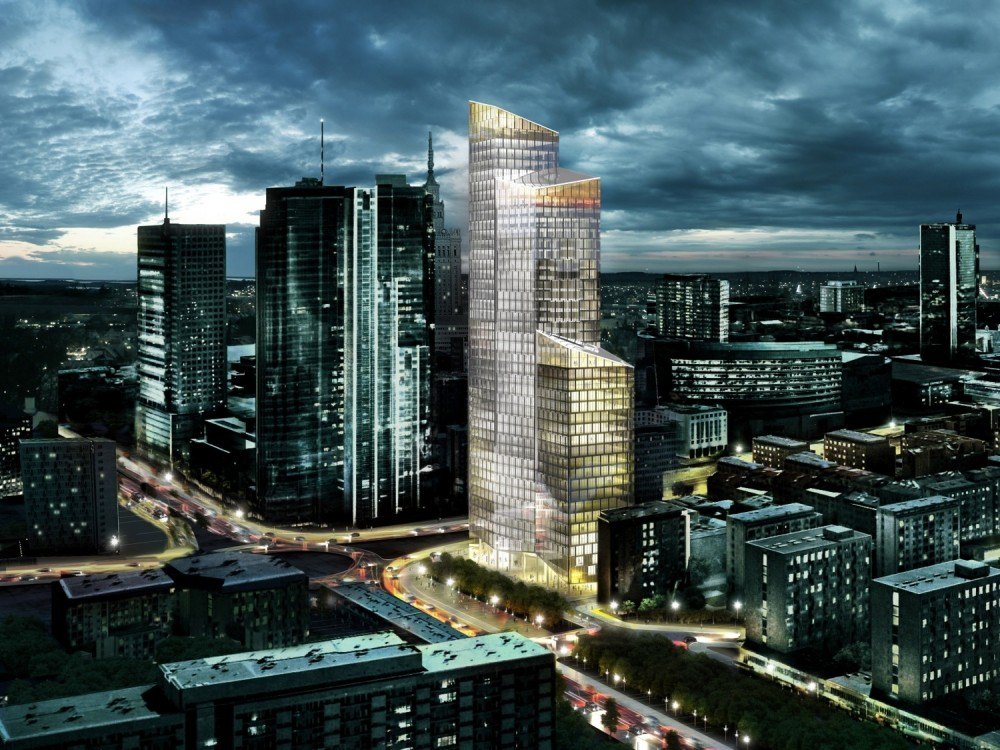Rory Scott reports for Archdaily.
At the annual Greenbuild International Conference in Philadelphia last week, the US Green Building Council (USGBC) finally announced the latest version of LEED. Aiming to make a larger forward step than previous versions, LEED v4 is described by Rick Fedrizzi, the CEO and president of USGBC as a “quantum leap”. But what are the key changes in the new LEED criteria, and what effect will they have? Furthermore, what problems have they yet to address? Read on to find out.
[Office tower in Warsaw. Image © Schmidt Hammer Lassen Architects]
Material Transparency
The most widely recognized change to the LEED system is material transparency, requiring a better understanding of the products being used in a building and where they have come from. As Beth Heider, USGBC’s 2012 chair, puts it: “if you create a really tight, energy-efficient building and fill it full of noxious materials, you’ve created the perfect gas chamber.”
In the field of healthcare, material transparency is definitely seen as a positive step, but it will come with an increased workload for everyone involved: according to Healthcare Design Magazine “the process of developing environmental product declarations (EPD), healthy product declarations (HPD), and lifecycle assessments (LCA) will be challenging and time-consuming… very few products have EPDs, fewer have HPDs, and no one really knows how to do a comprehensive LCA.”
Although somewhat counter-intuitively, in an attempt to make these changes easier to adjust to, LEED v4 awards credits simply for reporting the LCA of a design, rather than what that report shows. In other words, if a submitted LCA shows that a building is environmentally unfriendly, that building will still get LEED credits.
Combating ‘Greenwashing’
In previous iterations of LEED, it was possible to focus on easy, cheap credits to obtain LEED status for a building, while ignoring credits that might have more impact but were hard to achieve. This led some to accuse LEED of enabling greenwashing, projects that claimed to be green when really they were doing the minimum possible to become LEED certified.
In LEED v4, the USGBC has gone some way to combat this by introducing new prerequisites such as metering and recording the building’s energy and water use. These factors of building performance can no longer be ignored as difficult, time-consuming credits to achieve – they must be included to achieve LEED status.
Beth Heider also adds that “while LEED 2009 weighted points to encourage projects to do less harm, LEED v4 is aspirational in weighting and developing credits to encourage projects to do more good.”
Integrated design
LEED v4 contains a new credit for bringing together the full construction team at an early stage in the design process. In recognition of the idea that green designs tend to be better thought through when they are designed collaboratively by people with expertise in different areas, design teams will now be rewarded for working together from the very start of the process.
New Market Sectors
In a bid to make LEED available to an ever-wider portion of the construction industry, they have expanded their system to include data centers, warehouses and distribution centers, hospitality, existing schools, existing retail and mid-rise residential projects.
Improved Support
Aware that for many projects (particularly small ones), LEED certification is a complex and expensive task, the USGBC is moving to simplify LEED credit submittal requirements, provide descriptive step-by-step reference guide materials with videos and tutorials, and is also offering a more intuitive technology platform.
What Still Needs to Change?
As we’ve mentioned before, the LEED system certainly isn’t perfect, and there are still criticisms that haven’t been addressed by LEED v4. One thing that certainly hasn’t changed is LEED v3, which (thanks to fears that v4 is too big a change) is still available until June 2015. Considering the fact that LEED has always been criticized for being too easy to ‘game the system’, offering two completely different systems for developers to choose between seems a retroactive step.
And, perhaps most critically, LEED v4 still seems to have nothing which encourages true innovation in green building – preferring instead to emphasize their cut-and-paste rules for how to be green.





